By Shelby Clark
Throughout The Good Project’s lesson plans, we encourage teachers to use groups to engage students in discussion—and for good reason. Research shows (link here) that group discussions engage students in learning, and we’ve heard time and time again that students prefer learning this way.
Sometimes when we engage in discussions with others, it can be easy to come to an agreement. With peers, maybe we all agree that we liked the new Barbie movie better than Oppenheimer. With family, maybe we can agree that Grandma’s apple pie is better than her pumpkin. In a classroom, maybe we can all agree that, in fact, we’d really rather not be stuck on that island in Lord of the Flies.
However, more often than not, we disagree with one another. Oftentimes our values, beliefs, and attitudes come into tension, and we’re not always sure how to have a productive conversation with one another—or whether we even want to have a conversation at all. As our world has become even more global, and we’re able to reach out to people beyond the confines of our homes or classrooms, these tensions can become even more prominent in our global discussions on Instagram, Reddit boards, TikTok comments, Zoom webinars, and more.
What have we learned about important elements of discussion from research on communication and civil discourse? While we certainly cannot cover the wide gamut of research on civil discourse here, we’ve attempted to pull together some of the key take-aways for you to consider.
(1) Be mindful of your emotions. People who are entering into a conversation with people who may disagree with them should be prepared for uncomfortable or disagreeable emotions to arise; such a discussion often asks individuals to question their beliefs, values, or even identities. In such discussions, you should be aware of what types of emotions this type of potentially threatening conversation might raise for you. Consider using mindfulness practices to label, take care of, and accept your emotions. Don’t allow your emotions to guide you towards snap judgments, biases, and unwarranted criticisms. Instead, remind yourself of your own values and what is meaningful in your life in order to help yourself “cool down” potential defensiveness.
Check out the following for more information:
(2) Check your “meta-perceptions” and biases at the door. “Meta-perceptions” refer to how we think the other side thinks about us. Research indicates that most people think they are perceived more negatively by the “other side” than they actually are. For example, one study led by Samantha Moore-Berg found that both Democrats and Republicans overestimate how negatively the other party feels about their own group. Consider looking at the “Dignity Index” to think about how you’re thinking about the “other side.” Do you want to fully engage with them? Or do you see them as promoting evil? Similarly, civil discourse research encourages us to engage curiously with the “other side”—for example, rather than assume your friend ditched your movie plans because they dislike you, ask them out of curiosity what happened.
Check out the following for more information:
(3) Establish mutual respect and common ground. A key element of civil discourse is showing common respect amongst the parties. One suggestion to achieve respect includes trying out the “garden salad” effect—effectively trying to imagine a person’s vegetable preference (broccoli or carrots?). You could try this with any food or preference (Vanilla or chocolate? Dogs or cats?). Focusing on these individual elements helps us to see our “opposition” as individual people rather than as “the other side.” Another key tactic for building respect is focusing on stories over reasons (e.g., “How did you come to see the issue this way?”) and sharing personal experiences. As a group, learning about one another and fostering a sense of common understanding and respect are invaluable. Stories, and, moreover, personal stories, allow members to be vulnerable with one another and to begin building empathy and perspective-taking abilities. Reminders of shared common ground are not only an important step in establishing respect, but also help to keep the conversation civil when parties disagree (e.g., “We might disagree about politics, but how ‘bout them [insert sport team name here]!”).
Check out the following for more information:
What Hostage Negotiators Can Teach You About Arguing Productively (Online and Off)
Argue better by signalling your receptiveness with these words
(4) Acknowledge power dynamics. The Better Arguments Project notes that all civil dialogues are informed by historical context and are shaped by power dynamics. In their framework, they suggest that conversation participants recognize power, highlighting that “power impacts conversation dynamics. In many spaces of civil discourse, participants are reckoning with imbalances, real or perceived.” They suggest consideration of questions such as “What are the power dynamics related to the question at hand?” or “What role does each person play in contributing to the power dynamics at play?”
Check out the following for more information:
(5) Engage in active listening. You know that feeling when you’re in a discussion waiting for your turn to talk so you start tuning out everything else that’s being said? The problem is that this is the opposite of what you want to do to promote civil dialogue; instead, experts suggest that taking an active listening approach can help you achieve the best outcomes. Some key elements of active listening during civil discourse can include:
Looping: listening attentively, summarizing what you understood was important to the other person, checking if what you understood was right with the person, correcting your interpretation, and then checking again;
Paraphrasing: summarizing what you heard and checking in if you heard it correctly;
Expressing empathy: attempting to understand another’s feelings and responding with support and understanding to their feelings, regardless of your own emotional response. Heterodox Academy suggests using language such as “What is it like for you to feel so…” or “That must be difficult to feel so… how does it affect your life?” to help further explore each other’s feelings and emotions within a conversation;
Body language: demonstrating you are listening through head nods, eye contact, turning your body towards the person, a relaxed posture, a lack of distractions and open facial expressions.
Check out the following for more information:
10 Easy Tricks That Will Instantly Make You a Better Conversationalist
The Intercollegiate Civil Disagreement Partnership Facilitation Guide
(6) Hedge your claims. Even when you’re certain about your beliefs, present your claims and beliefs as changeable at the start. By doing so, Monica Guzman articulates, this “gives you room to revisit and rearticulate them as you let them mingle with others’ beliefs… and encourages others to loosen up, as well.” What does hedging look like? Hedging words include those such as “can,” “could,” “may,” “might,” “seem,” tend,” “likely,” “generally,” “seldom,” “often,” “occasionally,” “presumably,” “probably” “some,” and “others.” Essentially, hedging words indicate that you recognize that there is the possibility that there might be some cases where your beliefs might not be true or in which valuing the other side’s belief could be understandable or even valid (see what I did there?).
Check out the following for more information:
(7) Make the goal about understanding and learning, not about winning. Key ideas here are that rather than aiming to “win” a debate, discussion, or argument, we must change our goal towards trying to better understand the perspectives of those we’re debating, discussing, or arguing with. Certainly this is not an easy task, and a good dose of curiosity, open-mindedness, and intellectual humility are needed.
Open-mindedness: be willing to investigate and take on the opposing perspective. The Dignity Index suggests using key phrases to try to help draw out another person’s perspective, such as:
“Can you tell me more about that?”
“Let’s figure out what we disagree on; it can’t be everything.”
“I want to hear what you think.”
“Can you tell me what I’m not getting?”
Curiosity: ask questions, particularly follow up questions. People who ask questions are more liked by their conversational partners, and questioning makes conversation partners more willing to listen to you. The Constructive Dialogue Institute suggests three types of questioning: 1) questions to help understand (e.g., “What is the heart of the matter for you?”); 2) questions that seek out unexpected answers (e.g., “What surprised you most about [topic]?”); and 3) questions that ask about a person’s thought process (e.g., “I’m curious about what led you to that idea. Can you explain?”). When all else fails, a simple “What did you mean?” said with curiosity can help the conversation to continue flowing.
Intellectual humility: practicing intellectual humility means questioning your own opinions and viewpoints, accepting that you might be wrong, and being willing to change your opinions. Someone who is intellectually humble says they don’t know if they don’t know. How can you become more intellectually humble in conversations? Actively try to prove yourself wrong. Play Devil’s advocate. Argue against yourself. Acknowledge the complexity of an issue, noting that an issue is not black and white, but perhaps shades in between. Intellectual humility might sound like:
“I don’t know.”
“I truly feel pulled in different directions about this issue…”
“This is a tough one for me. Sometimes I think… and sometimes I think…”
Check out the following for more information:
People Will Like You More If You Start Asking Follow up Questions
Five Practices to Foster Constructive Dialogue in Your Classroom
(8) Focus on issues, not individuals. The more a person engages in specifically calling out other individuals, the more likely they are to become defensive and to dig into their pre-held assumptions and beliefs. The goal is to avoid making people feel shamed and to instead focus on criticizing and critiquing people’s arguments and ideas, rather than individuals themselves. The Starts With Us movement refers to this idea as being “soft on people” but “hard on issues.”
Check out the following for more information:
(9) Embrace ambiguity. Civil discourse requires us to accept that no one group has all the answers. The Ohio University Center for Ethics and Human Values notes, “Civil discourse requires that we acknowledge that the truth can be many-sided and elusive: we often disagree about what key concepts mean, how to evaluate the relevant evidence, and how to weigh competing values against each other. Civil discourse therefore requires that we embrace the principles of fallibilism—that human beings often get things wrong—and pluralism—that people of good will often reach different conclusions.” Again, Starts With Us describes this process of discussion and problem solving as building a bridge– everyone must contribute building blocks to make the bridge stand.
Check out the following for more information:
Starts With Us: Make It A Habit: Adopt a Problem-Solving Mindset
National Coalition for Dialogue & Deliberation Engagement Streams Framework
Together, we hope that these resources and guidelines can help you have civil discussions in difficult circumstances. We know, though, that we’ve only touched the tip of the iceberg. If you have other tips, please leave them in the comments section below.






